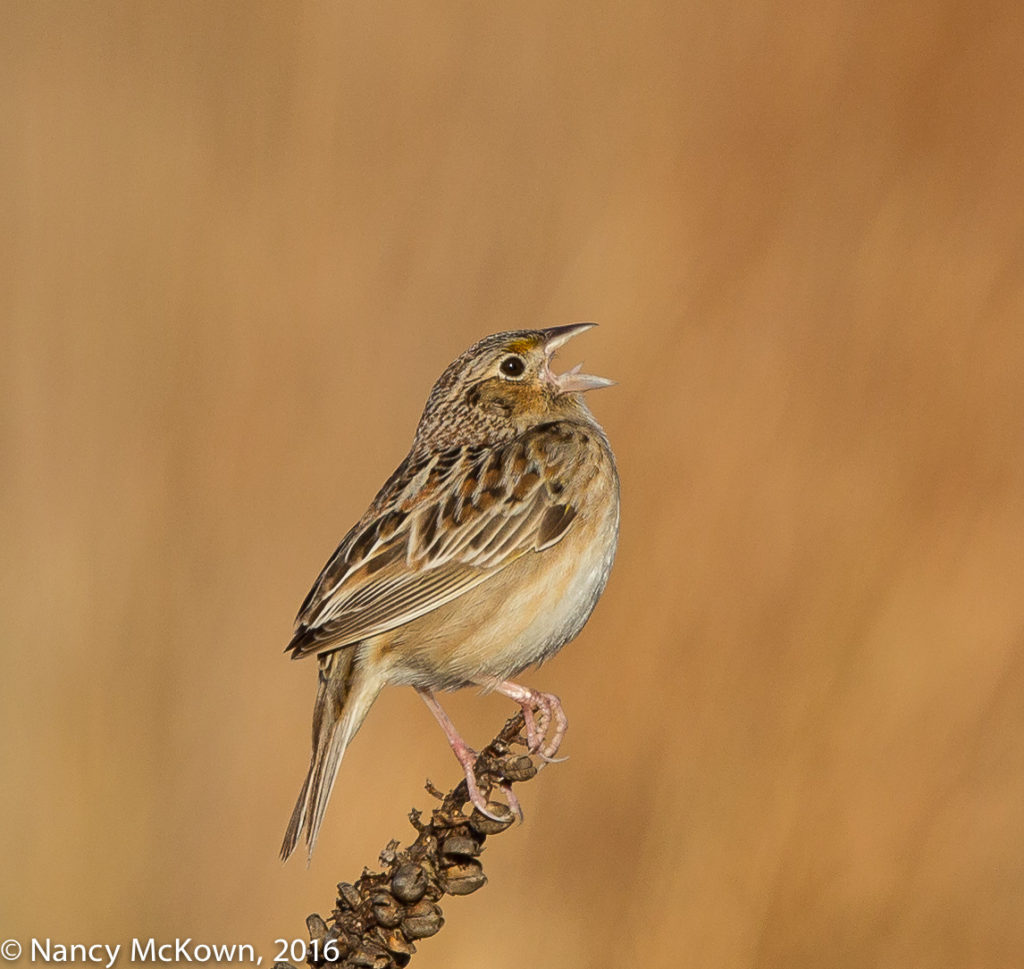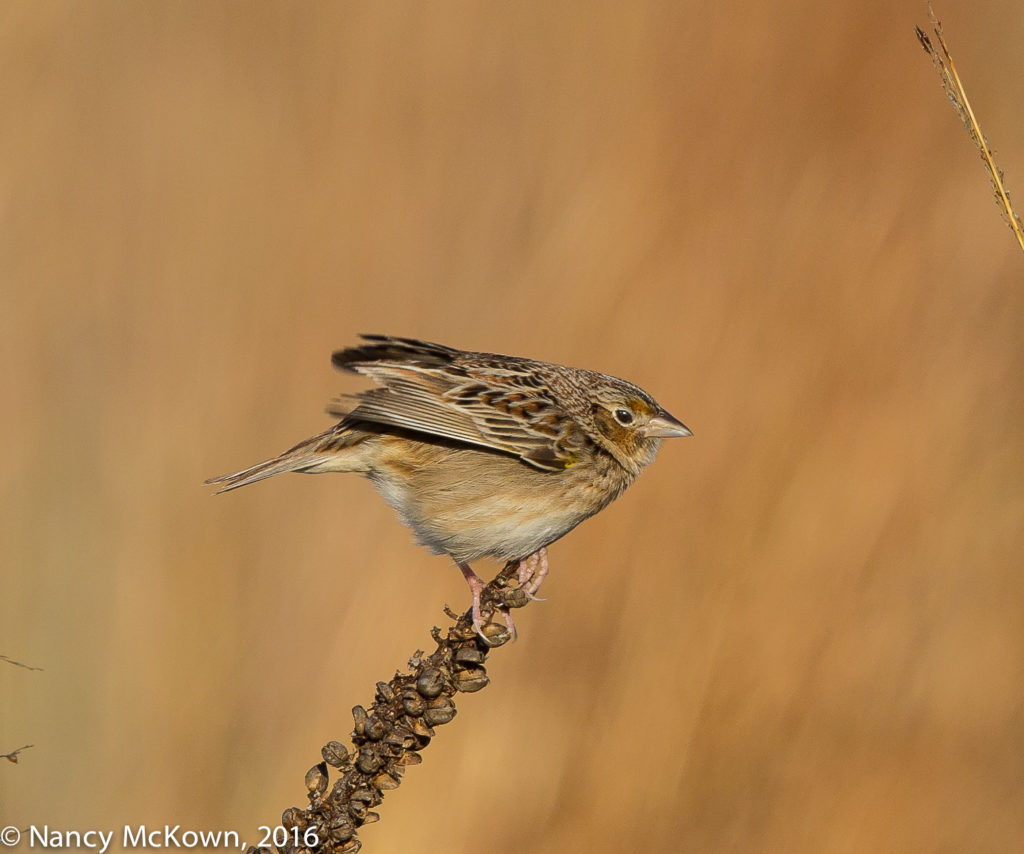Just Birdsong
On my way to the Allegan State Game Area, I always stop to admire a little patch of coreopsis established in a grassy field. These vigorous yellow flowers, all dewy and intermixed with a few showy purple pea flowers, are luxuriously tucked in with the tall looping grasses. Their gleaming and peaceful countenance always gives me pause. On this particular morning, the sky is cloudless, and looking west above the coreopsis, a partial moon sits illuminated in the daylight sky. Every time I go, I hope that I will see some bird, any bird, bobbing in and around this lovely scenario. Just birdsong so far. Perhaps I’ll have better luck when the flowers go to seed.

ISO320; f/9; 1/800 Second
Photographing Grasshopper Sparrows
Other more productive bird photography locations awaited. When I took these photos in late May, 2016, Grasshopper Sparrows were singing their little hearts out in the tall gold prairie grasses. The males were tirelessly on task and not about to be diverted from their mating rituals.
And thank goodness for that! Despite the easy photographic pickings right in front of my eyes, I was momentarily captivated. The birdsong, the caressing breezes, the rhythmic motion of the golden grasses, and the sublime morning light came together to form a breathtaking convergence of shape, sound, color, and form. So soothing….easy to drift away and get lost in the moment.
The Grasshopper Sparrows no doubt would have continued their songs, but the soft early morning light would not stay for long. I captured a dozen or so images and then sat back to enjoy.
Territorial Songbirds
Spring brings many rewards for bird photographers. Once these Grasshopper Sparrows reach their nesting destinations, the males sing with great enthusiasm, in full view, especially in the early morning. They defend their nesting territories robustly with song, threats, dive-bombing – whatever it takes. If a weaker/younger male bird is forced out by a more powerful bird of the same species, he will try again in another territory or simply wait until the following year when he is stronger and more vigorously appealing.
Bonding with Song
By mid-June, fewer birds are out in the open. The nestlings and even the fledglings are tucked away, listening and learning. Survival depends on the young being able to bond with parents. At some time, very early in their lives, these young birds learn to recognize, imitate and then replicate their species’ song.

ISO320; f/9; 1/800 Second.
Learning v Genetic Predisposition
Research out of Australia – and associated with the Cornell Lab of Ornithology- suggests that some song birds are capable of learning their mother’s special calls during the embryonic stage of development and then reproducing those calls as nestlings begging for food. Included in this fascinating research is how ornithologists were able to discover and analyze these embryonic voiceprints using spectrographs and computer analysis. Visit this link to learn more.
Vocal Gymnasts
Every morning whether I’m out in the field or in our yard, I hear breathtakingly sonorous bursts of bird song carried in the wind. The musical vocalizations of song birds are much more complex than any other species can produce. Two sets of vocal organs (called the syrinx) have evolved to allow birds to sing multi-layered, acoustically diverse songs (with region specific dialects). In addition to bird song, many species of birds use non acoustical sounds (like hums made with beating wings or tails, or drumming made with chiseling beaks-or enticing dancing and quivering.) to increase their chances of being noticed and successfully reproducing.
Life Affirming Repertoire
It’s an enduring and life affirming repertoire that I love to listen to. Makes bird photography a most enticing and calming endeavor.









Very interesting blog–as usual. Thanks, Big sister. I learned a lot about birds that I never imagined before. Very cool.
I have decided that leaving camera on AI servo can be an advantage in photographing birds. What is your opinion?
Yes Indeed Bev. I keep my cameras on Al servo autofocus modes as the default. Birds are rarely stationary.
Thank you for reading my blog.
I so appreciate your being able to catch birds in their moments. Not being able to look quickly or closely enough, I’m having to rely on you! I love this sparrow’s rich coloration. Sophisticated, not splashy!